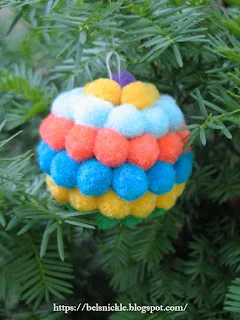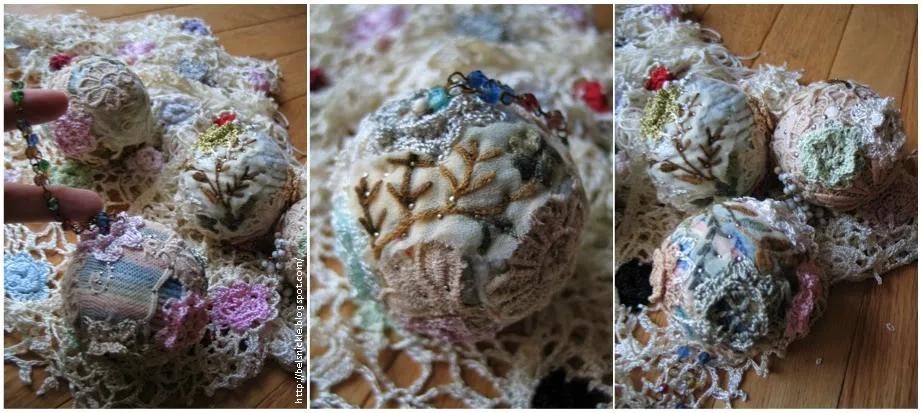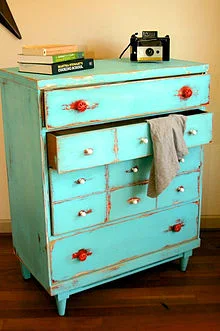 |
| Kids can craft their own Popsicle fort, trimmed with faux candy, clothespin soldiers, fake ''lace'' icing... (Wooden skies in photo are crafted here.) |
Our gingerbread cookie fort began with the discovery of two, well-loved, clothespin soldiers at the thrift store. These British gentleman had worn looking bear skin hats, chipping paint and funny drawn expressions; they looked as though each had seen many battles in the nursery... I decided to recycle them into something new.
 |
| Gingerbread fort guarded by soldier's wearing bearskin hats, holding peppermint lollipops. I added faux "chocolate" chunks to their hats made from scrap brown foam mat. |
- two wooden clothespins
- acrylic paints: brown, red, white, and blue
- white braid
- permanent black ink marker
- two large black pom-poms (if your soldiers are British)
- wire and white ribbon for hanging
- large, medium and small wooden Popsicle sticks for the gingerbread fort
- white school glue
- hot glue and hot glue gun
- four red chenille stems, three white
- colorful Styrofoam beads
- narrow white lace trims
- novelty Christmas trims (optional)
Step-by-Step Instructions:
- With the help of an adult, use the hot glue gun to attach black pom-poms, or ''bearskin'' hats to the heads of two wooden clothespins - that is if you are making guards of the gingerbread fort British. You can make these guards look more like soldiers from your own country, of course.
- Paint the upper part of the soldiers red for their icing coats and the lower halves blue for their icing pants.
- Cut a red chenille stem down to fit the length of each soldier's arms. Slide the arm piece into a small nail hole on either side of the soldier's shoulders using glue to make the arms stationary. Let dry and set the soldiers aside to make the Popsicle fort.
- Glue on rows of Popsicle sticks like those shown below in the photograph, on top of Popsicle cross bars underneath. There should be two that are horizontal to each other. You can see the lower one sticking out under the draw bridge at the bottom of the fortress. Let the first gluing dry.
- Next attach the turrets and drawbridge.
- Use the permanent ink pen to draw the opening for the draw bridge and windows. Now you are ready for the painting of the fort.
- Paint the gingerbread fort entirely brown to begin with. The openings should be a bit darker.
- Hot glue the soldiers on either side of the drawbridge.
- Wind together red and white chenille stems to make two peppermint lollipops; one for each soldier to hold. (optional candy canes)
- Wind together two more small white and red stems to make the candy canes attached to the front gates at the drawbridge.
- Using oven-bake clay make the circular candies painted red and white to trim the drawbridge and top of the fort outer-wall.
- Now trim the gingerbread with tiny colorful Styrofoam beads to make strands of lights.
- Glue on white lace trim to mimic decorative white icing.
- Also glue on white braid to trim out the soldier's uniforms to look like icing. Because our soldiers were once trimmed in gold braid, I painted these white for icing during this craft.
- Trim out the rest of the gingerbread fort with any other novelties you like.
- Hot glue on hook and white ribbon to hang the gingerbread fort on a Christmas tree.
 |
| Details of fort and soldiers. Left, smiling soldier happy to retire from battle and decorate a Christmas tree instead. Center, turret of the fort trimmed with lace, Styrofoam beaded Christmas lights and a tiny gingerbread star cookie. Right, the drawbridge decorated with oven-bake peppermint candies. (Left-over from this tree tutorial here.) |


















































